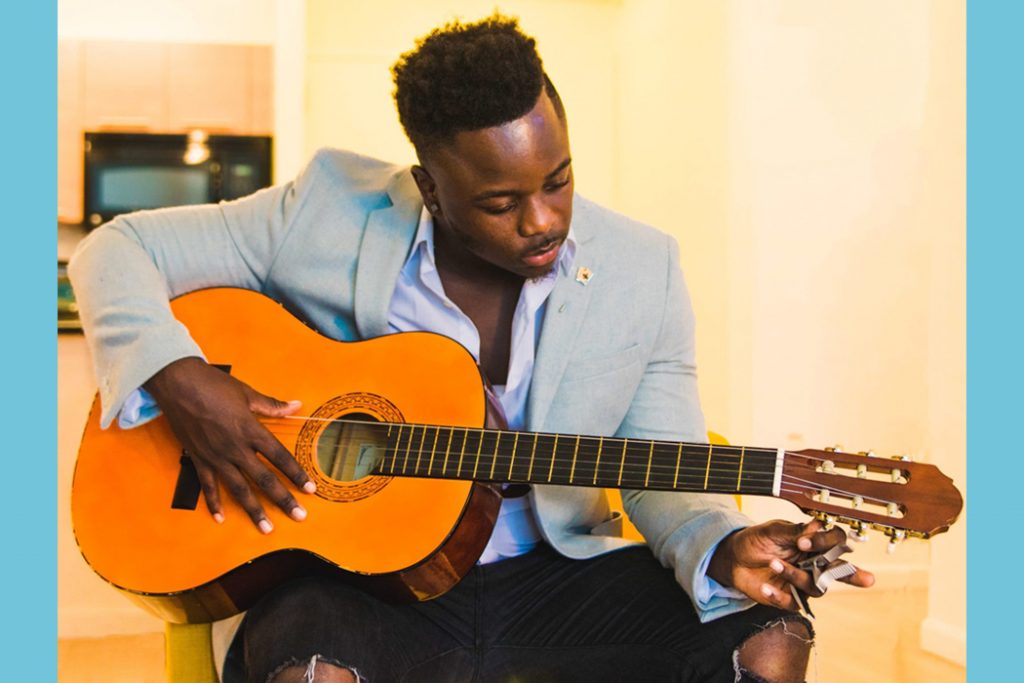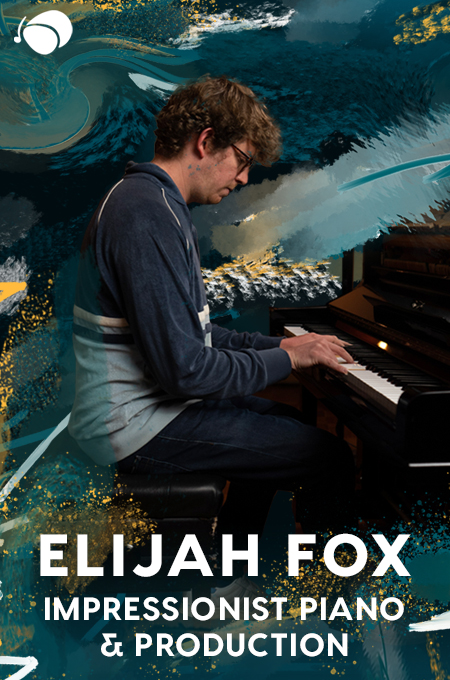+ Take your modern jazz piano and hip-hop beat making to new heights with Soundfly’s new course, Elijah Fox: Impressionist Piano & Production!
Last year, Rihanna’s hit single “Work” started an argument here at Soundfly. We come from an array of different musical backgrounds, styles, training, and instruments, and the question that kicked us off was:
What key is “Work” actually in?
It’s got that super repetitive synth bass line that returns to C# every time, giving the impression we’re in C# Dorian mode, but the key signature is B major, or G# natural minor. The melody floats around a C# note a lot, but it still sounds unresolved, except in a few moments where it lands on G#.
There are even a couple moments that sound a little more major and could lead one to hear the B as an unplayed tonic (or “home base”). But before we dive deep into this topic…
A brief aside…
We recently launched a video on our YouTube channel that teaches any musician how to memorize every common note interval using only movie themes from John Williams scores. It’s…pretty rad. Musicians, composers, and curiosity-junkies, check it out and subscribe if you like that sorta thing!
So what’s the deal with “Work?”
By all accounts, this is a very simple, repetitive song — how can experts with decades of music experience and credentials from some of the top music schools in the country disagree on the fundamentals of it?
This is a pattern we wrestle with a lot when trying to analyze modern music. As musicians, so much of our music theory training consists of learning rules that were developed to describe classical European music. But modern music operates very differently in a lot of ways — from a greater focus on loops, to more rhythmic complexity and syncopation, to less harmonic complexity, and other key differences.
As our collaborator Ethan Hein has pointed out, a lot of these differences may come in part from the Afrodiasporic roots of so much of modern popular music (especially hip-hop and R&B, but also rock and many other genres). Hein and others argue that music education in the United States fails to take modern popular music into account enough, and that the way we think about and teach theory needs an update.
The most salient pieces of music theory for modern music, like rhythm which is often mostly ignored in classic music theory courses, could be taught in new ways in order to account for these differences.
This disconnect between the way so much of modern music functions, and the rules we’re taught in school not to break, might explain some of the more ferocious online debates around music theory analysis of popular pieces. (Exhibit A: check out the comments in Owen Pallett’s analysis of Katy Perry’s “Teenage Dream” or any Facebook post about music theory.)
So… do we still need it?
Does that mean music theory is useless? Should we all be throwing away our orchestration textbooks and reaching for the closest DAW to layer loops on top of each other with no regard for notes, scales, chords, or other theoretical concepts?
No way! (At least to the part about throwing theory out the window.) At its best, music theory gives us a number of ways to describe the music we hear, unwrap the decisions the artist made, translate those lessons into our own music, and communicate them to collaborators or other musicians. Theory allows us to quickly achieve the effects we’re going for, or push ourselves to unexpected, interesting places with our music, and play with the expectations of the listener as well.
Inspired by his recent analysis of Beach House’s new single, “Dark Spring,” I asked Flypaper author and songwriter Patrick McGuire why he thinks music theory is important for musicians, and he outlined three major reasons:
- It explains why certain things work and sound pleasing (or don’t).
- It’s a language that allows us to communicate ideas accurately with other musicians.
- It allows us to understand how to create the emotional sonic color palettes we’re going for.
That said, we don’t all need to run out and read the entire Cambridge History of Western Music Theory. As musicians, there’s certainly nothing wrong with focusing on the parts of music theory that you need the most, while politely ignoring the rules of, say, first species counterpoint, if that’s not the type of music you’re most interested in. Don’t get me wrong — I think there’s a lot to be gained creatively by studying concepts outside of your genre and usual approach. But if it’s putting you to sleep and not sinking in, then skip it and move on.
As creators, we can treat music theory more flexibly than is often taught.
Soundfly has two harmony courses created for modern music makers: Unlocking the Emotional Power of Chords and The Creative Power of Advanced Harmony. In them, we go deep into this idea of applying theory concepts to modern music and for modern musicians, not a 19th century composer.
(No offense to you 19th century composers out there reading this.) If music theory is a spectrum from banging random keys on a keyboard to a full-blown Schenkerian analysis of orchestral arrangements, all we’re trying to do is get you far enough along to have control over how you represent the emotions you’re shooting for in your music.
A few more examples of why music theory is awesome
One of the best cases for why music theory can be helpful for music makers is made by the songs that use really interesting harmonic concepts to break out of generic clichés. We’ve covered a lot of these songs on Flypaper, from Kanye’s “Ultralight Beam” (which has a triplet-ish feel that sounds arguably like 12/8 time) to Gnarls Barkley’s “Crazy” (which uses sus chords, a Picardy third, and a bunch of other harmonic surprises). Even Justin Bieber’s “Sorry” has some interesting theory stuff happening, never actually using a I chord.
The first example that pops into my mind personally is Radiohead’s “All I Need,” which uses the Lydian mode — the scale you get when you start on the fourth note of the major scale (such as F to F in the key of C major, so with a B natural). Thom Yorke really emphasizes that raised fourth scale degree in the melody, giving it an otherworldly sound. It can be so much fun to play with other modes and emphasize the specific notes that make them sound different and weird.
Our free Theory for Producers courses have countless other examples, from Missy Elliott’s “Get Ur Freak On” (Phrygian mode) to Björk’s “Army of Me” (Locrian mode).
A more recent example from this week is this super glitchy, beautiful new track by James Blake called “Don’t Miss It”. The song floats in and out of different keys, and includes some beautiful dissonances and production effects. The initial piano part starts with a big E major piano chord, followed by an A minor sixth chord — an unusual progression that’s uplifting, but with a subtle darkness to it that’s almost sinister. The E major scale doesn’t include a C natural, which is one of the most prominent notes in the A minor chord, so we’re already in interesting territory right out of the gate.
But it’s the bridge (around 1:00) that caught our attention for its disorienting effect. It has a Lydian modal feel to it, reminiscent of an early 20th century Debussy piece, which is compounded by a slightly stilted rhythm and a wobbly tape-warble, leaving the listener off balance and not sure what to expect. It’s songs like this, that use theory as a launching point to really surprising places, that make us want to keep learning forever.
Putting theory into action
At Soundfly, we believe one of the best ways to learn theory is to put it into action. We encourage musicians to use constraints to force themselves to experiment with different ideas and concepts. What would happen if you tried to write a pop song that used modal interchange? What if the melody of your verse never hits the tonic? What if you modulate the key midway through your song?
You may not write a hit right away, but once you start to add those theory notches to your tool belt, you’ll have them with you to use whenever you want going forward.
At its worst, theory can feel like rules designed to keep you in the lines. But at its best, it’s an evolving language that ties together disparate worlds and tries to describe the indescribable. While finding that common ground is not always easy, it’s part of what makes learning music so irresistible and rewarding.
If you’ve been avoiding theory, this is the week to get off the sidelines. We challenge you to pick one new theory concept and try to use it in a new short piece of music or groove.
Don’t stop here!
Continue learning with hundreds of lessons on songwriting, mixing, recording and production, composing, beat making, and more on Soundfly, with artist-led courses by Kimbra, Com Truise, Jlin, Ryan Lott, and the acclaimed Kiefer: Keys, Chords, & Beats.




